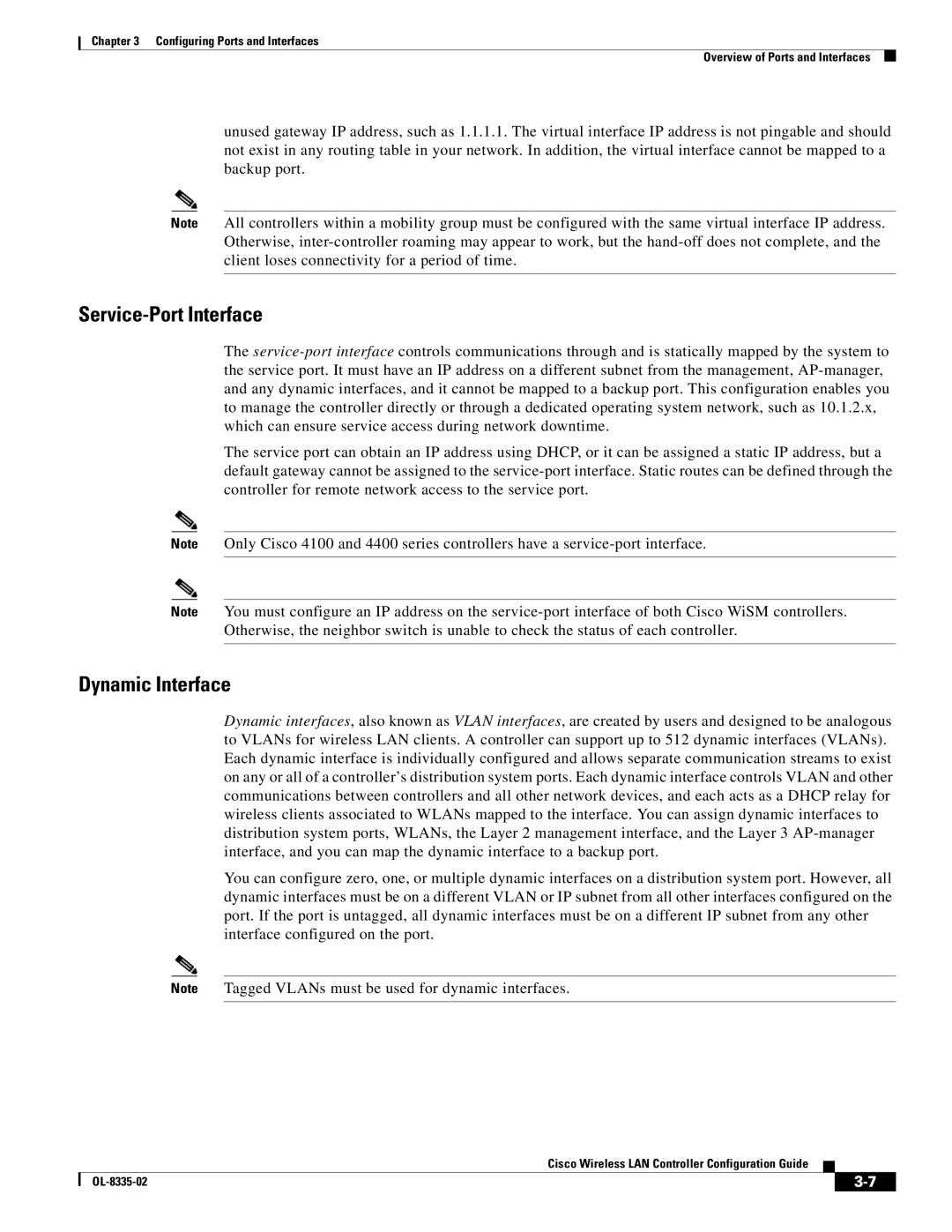
Chapter 3 Configuring Ports and Interfaces
Overview of Ports and Interfaces
unused gateway IP address, such as 1.1.1.1. The virtual interface IP address is not pingable and should not exist in any routing table in your network. In addition, the virtual interface cannot be mapped to a backup port.
Note All controllers within a mobility group must be configured with the same virtual interface IP address. Otherwise,
Service-Port Interface
The
The service port can obtain an IP address using DHCP, or it can be assigned a static IP address, but a default gateway cannot be assigned to the
Note Only Cisco 4100 and 4400 series controllers have a
Note You must configure an IP address on the
Dynamic Interface
Dynamic interfaces, also known as VLAN interfaces, are created by users and designed to be analogous to VLANs for wireless LAN clients. A controller can support up to 512 dynamic interfaces (VLANs). Each dynamic interface is individually configured and allows separate communication streams to exist on any or all of a controller’s distribution system ports. Each dynamic interface controls VLAN and other communications between controllers and all other network devices, and each acts as a DHCP relay for wireless clients associated to WLANs mapped to the interface. You can assign dynamic interfaces to distribution system ports, WLANs, the Layer 2 management interface, and the Layer 3
You can configure zero, one, or multiple dynamic interfaces on a distribution system port. However, all dynamic interfaces must be on a different VLAN or IP subnet from all other interfaces configured on the port. If the port is untagged, all dynamic interfaces must be on a different IP subnet from any other interface configured on the port.
Note Tagged VLANs must be used for dynamic interfaces.
Cisco Wireless LAN Controller Configuration Guide
|
| ||
|
|
